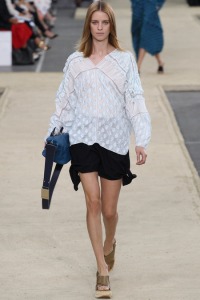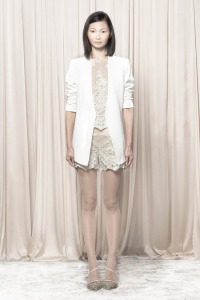potato or potato.
Here’s a list of questions.
1. Have you ever sent a text message while driving?
2. Would you say you travel abroad frequently?
3. Do you post a lot of pictures on Instagram?
4. Do you prefer to stop at big boxes or locally owned stores?
5. Do you have an iPhone or an Android phone?
6. How often do you eat sweets?
7. Do you tend to buy things that are on sale?
Our goal: Get people to tell stories. Because check yes, check no is so middle school, friends.
 (Pertinent, yes?)
(Pertinent, yes?)
So let’s reword these questions and make them a little more fun.
1. Have you ever sent a text message while driving?
Or…. A) You’re in the middle of an intense texting conversation, but you’ve gotta go pronto — what’s your exit strategy? Or do you even exit the conversation? B) What would you say is your average speed for stop-light texting?
2. Would you say you travel abroad frequently?
Or…..A) Your thoughts on the travel-selfie. Cool? Or like your head photoshopped into photos with iconic landmarks? Your method? B) What’s traveling like for you? A planned method? Or more of a throw a dart on a map approach? …. Or are you more of a Pinterest traveler? Be honest.
3. Do you post a lot of pictures on Instagram?
Or….. A) In lieu of J. Franco’s NYT article on the selfie, have you changed your thoughts about them? Do you post a lot of them? If not — then what of? B) What’s your method for Instagram pictures? Are you in it for the ‘likes?’ More of a foodie type? Could you categorize your Instagram?
 (I know this is from Facebook —
(I know this is from Facebook —
but please do see his Instagram @jamesfrancotv)
4. Do you prefer to stop at big boxes or locally owned stores?
Or…. A) If you’re on vacation and you come across a Starbucks, do you go there? Or are you the type that finds a cool local option? B) Which is more interesting to you — the familiarity of knowing that every Wal-Mart is a replica (albeit they sometimes switch around that pet section)? Or the familiarity of knowing the community in which your goods came from? Or does this stuff even matter in that long run?
5. Do you have an iPhone or an Android phone?
Or…. A) I’ve heard this. Can’t verify it. That iPhones are made for easy usage. Droids are for people who like customization. What type of person are you? Does your phone reflect that? B) This recent TIME article claims ‘iPhone Users Have More Sex’ — pretty bold statement, you think?
6. How often do you eat sweets?
Or…. A) If you’re standing in line and all you’ve ordered is a danish – are you one of those people that feels the need to explain your ordering choices to the person behind you? B) I’m handing you this pyramid. Where would you categorize the food you eat — bottom being the most of. Remember — talk me through your choices.
7. Do you tend to buy things that are on sale?
Or… A) What’s the appeal of Black Friday and After Christmas shopping for you? B) What are the first three thoughts that come to mind when I say the word ‘sale’ item. (Example: mine are ‘out of season, ‘probably size large’, ‘there for a reason’)
It’s important to ask the right questions. I’m not at all saying these alternatives are the ‘right’ questions by any means. Asking the right questions allows for your interviewee to open up. You don’t get insights from ‘yes’ or ‘no’ questions — you get facts. Fact – this lady does in fact shop sales. The insight comes in why she shops those sales. Is it because she likes that these items are cheaper? Or does she not shop them because of what ‘sale’ means to her. Asking the right question will allow you to maybe even come up with a better way to promote ‘sale.’ Maybe even change up the word if you discover (via asking the right questions) that sale is negatively connoted.
** I highly recommend following the above hyperlinks for interesting reads.





 (Thought this was relevant, and kind of funny)
(Thought this was relevant, and kind of funny)